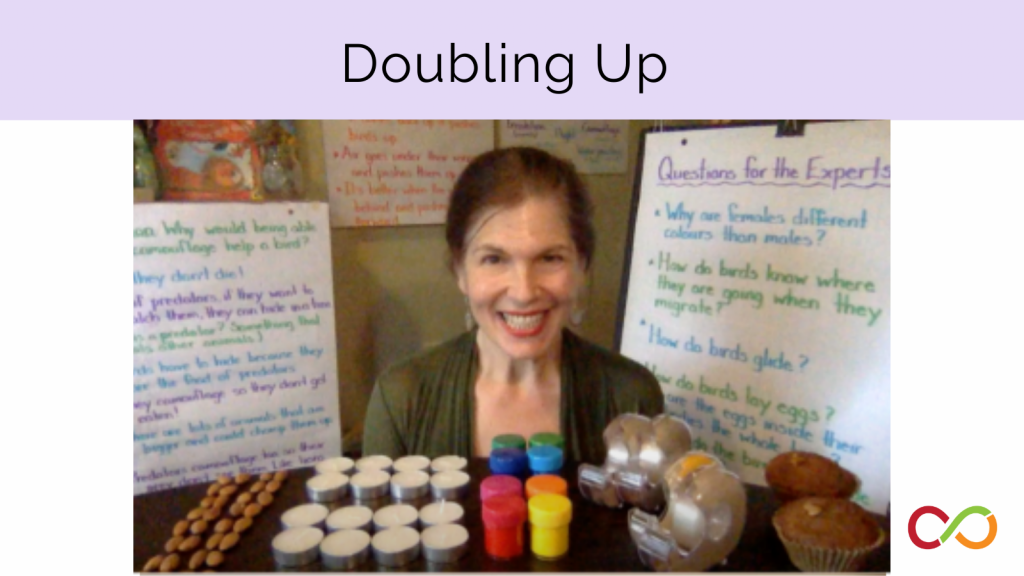Doubles
Primary (Age 6 – 9)
Curriculum Goal
Primary: Number Sense
- Solve problems involving the addition and subtraction of one- and two-digit whole numbers, using a variety of strategies, and investigate multiplication and division.
Context
- Students should have previous experience with doubles.
- Students and the teacher begin by sitting on the floor in a circle.
Materials
- Whiteboard and marker
Set of doubles cards from 0 + 0 to 12 + 12 for each student (Appendix A)
Lesson
- Ask students to tell you a double (e.g. 2 + 2 = 4), until the class has listed all the doubles from 0 to 12.
- Have students explain how they got the answer; students will list different strategies.
- Tell students they will be getting their own set of double cards (Appendix) from 0 to 12 and that their job is to organize the cards in a way that makes sense to them. There is no right or wrong way.
- Hand the cards out and give students time to organize their cards. It is okay if they look to the children beside them for ideas.
- After students organize their cards, go around and ask them how they organized them and if they can notice any patterns.
- Common examples include 0 + 0 = 0, 1 + 1 = 2, 2 + 2 = 4, etc.; all the odd questions on one side and all the even questions on the other side.
- Have students write out the doubles in the same way they organized them in their math notebooks. This gives teachers the opportunity to come back to it and becomes another meaningful way for students to practice counting doubles.
- Bring the class back together and go through each different way students organized their cards. This gives students a chance to see other ways their classmates have organized the doubles.
Look Fors
- How easily do can children name doubles?
- Can children explain how they got to their answer?
- How do children organize their double cards?
- Do children know their doubles?
Share this lesson
Share on facebook
Share on twitter
Share on email

